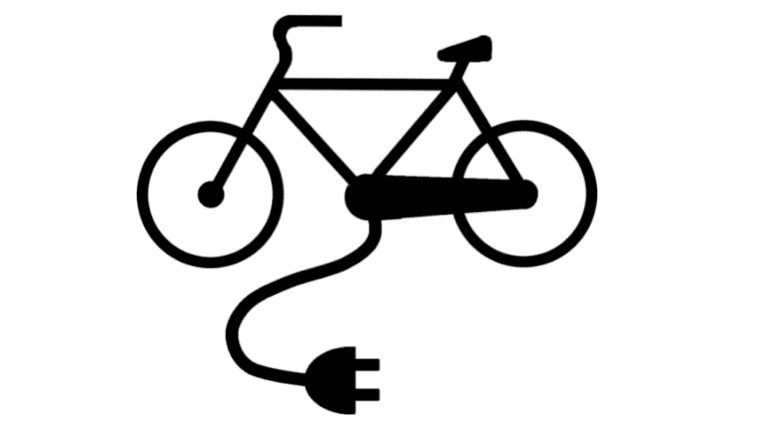E-bikes have become a popular mode of transportation in recent years, and a topic of conversation among transportation planners, sustainability advocates, and cycling advocates.
The Courier spoke via teleconference with Dr. Jennifer Dill, Profession of Urban Studies & Planning at Portland State University.
The interview was arranged by SciLine, a non-profit and nonpartisan organization that matches journalists with experts.
The Portland State University website describes Dr. Dill’s area of research as follows:
“Professor Jennifer Dill researches transportation decision-making processes and how those can inform policy and planning.
“Her recent projects focus on travel behavior, bicycling, shared mobility, transit-oriented developments, and health. She teaches courses on planning and research methods, as well as transportation. In addition to her faculty role in the Toulan School, she serves as Director of the Transportation Research and Education Center (TREC) at PSU.
“Dr. Dill values the partnerships between Portland State, the community, and public agencies, both in her research and teaching. Prior to working at Portland State University, Dr. Dill held several positions working on air quality and transportation issues in California for governments and nonprofits.”
The Courier began the conversation by asking Dill to explain how an e-bike differs from a moped or scooter.
“In the U.S., most states have adopted a three-tier classification system for e-bikes in terms of regulating them,” Dill said. “So in those cases, when we talk about an e-bike, first of all, the bike has to have pedals that work, so you have to be able to pedal and propel the bike.”
“Unlike when we go to some other countries, you may have seen e-bikes that are really more like a moped or an electric motorcycle,” she said. “So when we talk about e-bikes in the U.S., there are definitely pedals.”
She said there are three classifications of e-bike in the U.S.
Two of the three types are called electric assist, where the bike won’t move forward unless the driver is pedaling. One of those types has a maximum speed of 20 mph, while the other can travel up to 28 mph.
“The third type of e-bike has a throttle, which means you can ride the bike without pedaling, and those top out at 20 miles an hour with the electric assist,” she said. “Now any of these bikes can go faster than that if you’re physically able to pedal it faster, particularly going down a hill, for example.”
The Courier asked if there are special licensing requirements for riding an e-bike.
“In most places, you don’t need a separate license to ride one of these,” Dill said. “In fact, I’m not sure if there are any places where you do.”
“The regulations vary with respect to maybe where you can ride them,” she said. “And sometimes whether or not you need a helmet to ride them, particularly depending on age.”
“So there are a lot of places, maybe in parks districts and along trails that sometimes prohibit the use of motorized transportation, which technically includes a motorized e-bike,” she said.
“Some of those are changing. But it can sometimes be confusing for people to know where they can ride it and where they can’t ride it,” said Dill. “But for the most part, licensing is not an issue.”
The Courier asked Dill how safe are e-bikes on multi-use paths.
“Sure, that’s a good question,” she said. “I think first of all on a multi-use trail, even without e-bikes, you already have most likely pedestrians, maybe roller skaters, skateboarders, people on bikes, so you already have a mix of users going at different speeds.
“So it’s it is important to sort of design to anticipate that mix,” she said “Adding e-bikes can add some bikes that are sometimes going faster than other bicycles.”
“I think one thing to keep in mind is it’s not just the e-bike,” she said. “It’s who’s riding it.”
“So for example, if I’m writing any bike on a trail, there’s a good chance that some much younger person on a road bike in lycra could be passing me by on their regular bike and me on my e-bike is going a bit slower.”
“But definitely, especially when you have any vehicle that’s going faster, the faster it goes, if it gets into a crash, there is a higher risk of injury,” she said. “So it is important to be thinking about speed and maybe even regulating speed on trails, designing them wide enough to allow different users to pass each other safely, and not have those close calls situations.”
What about the environmental impact of the e-bike?
“There are definitely environmental benefits in terms of reducing air pollution emissions,” Dill said.
“Our most recent one found that about a little over half of the trips that people were making on e-bikes were to places like commuting, shopping, errands, things like that,” she said. “And those people told us that in about two-thirds of those trips, they would have driven a car if they hadn’t used their e-bikes.”
“And it doesn’t matter a whole lot what the source of the electricity is, you’re still getting emission benefits from the e-bike. “And in some scenarios, we found that within incentive programs, giving a certain type of an incentive to an e-bike might actually result in greater carbon reductions than some incentives to purchase electric cars.”
How widespread are incentives for the purchase of e-bike?
“At Portland State, we’ve been keeping an inventory of at least the publicly available incentive programs and they’ve been increasing,” she said. “Right now we know of at least 70 active or adopted programs either at the local or state level.”
“And those include both rebates and point-of-sale subsidies,” Dill said. “Also things like e-bike lending programs or e-bike libraries so people can test it out before they decide to purchase one.”
“So there’s a full range,” she said/ “And we have found that about a quarter or more of those programs, do prioritize low-income households, which is really important because the cost of an e-bike is a barrier, particularly for lower-income households.”
What is the price range for a road-worthy e-bike, one that is not a piece of junk?
“I like your qualification there,” she said. “So the price range for that sort of higher quality bike could be anywhere from $1000 to over $5,000.”
“Particularly, there are more and more e-bikes like e-cargo bikes where you could carry your kids or groceries and other things. So those are obviously going to be on the higher end,” she said.
The Courier asked if Dr. Dill had any closing comments.
“I think one thing that we’re seeing from our research is that e-bikes are really expanding the range of people who can use a bicycle either for commuting, getting to shopping, or for recreation,” she said. “So our national survey of e-bike owners found that 29 percent of them said that they had a physical limitation, that would make riding a standard bike very difficult.”
“And so it really is opening up opportunities for those adults, sometimes older adults, but not always, to continue or to take up bicycling,” she said.
“And we’re finding that there’s health benefits from that, that even with that electric assist, you’re still getting some moderate to vigorous physical activity, which our doctors are recommending we get on a regular basis.”
“And we find that those e-bike owners, they’re using our bikes more and they’re traveling further, so they’re getting more of that benefit,” Dill said.




